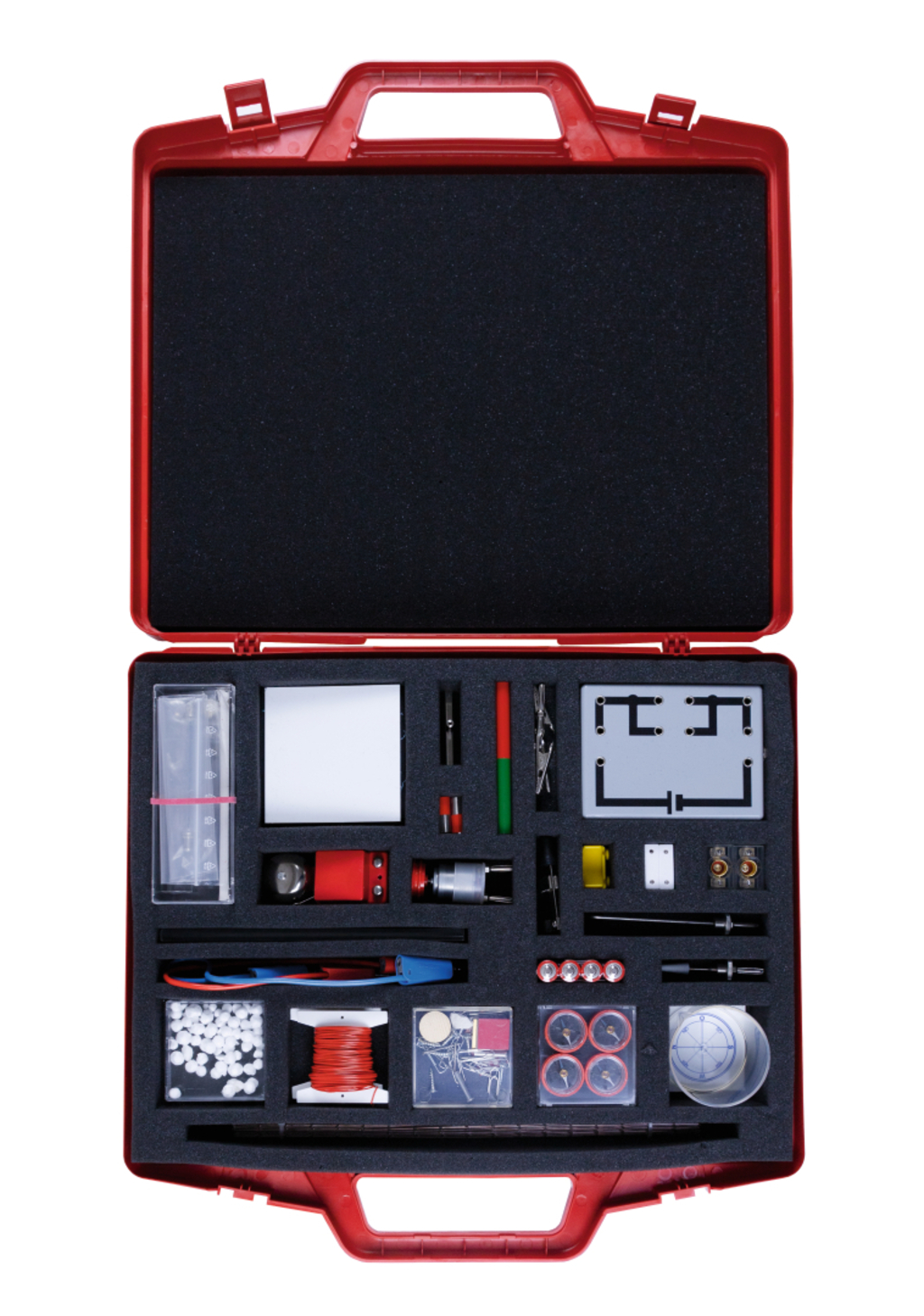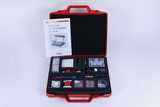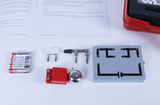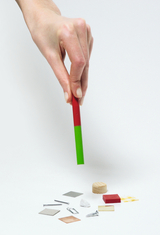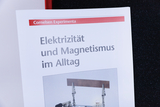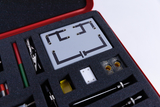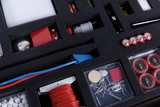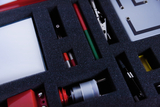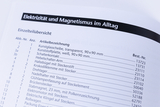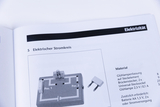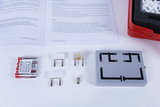Students kit Everyday electricity and magnetism
This kit contains equipment and resources for scientific experiments covering multiple disciplines to study electrical processes and permanent magnetism.
In electrostatics there are experiments for demonstrating electrical charge and investigating how charges behave. In the magnetism section it is possible to study the properties of permanent magnets.
The key focus is on experiments to study the flow of current and on basic electrical circuits.
More advanced experiments allow the effects of electrical current to be investigated.
Age 11-14
Materials for 1 work group or demonstration
In this experiment, a rubbed sheet of art glass is approximated to spheres of Styrofoam.
Der Versuch zeigt, was beom Öffnen und Schließen eines elektrischen Stromkreises passiert.
In this experiment, the students can find out whether liquid substances have electrical conductivity.
In this experiment, one examines the parallel connection of incandescent lamps and their effects when the switch is closed.
In this experiment, one examines the series connection of incandescent lamps and their effects when the switch is closed.
Students investigate the magnetization of iron wire with a bar magnet.
Students build a small model compass and observe the difference between a bar magnet and a magnetic needle.
In this experiment, one observes the behavior of the elderberry pith pieces when the retaining bar is touched several times by the grated plastic rod.
In this experiment, one observes the behavior of the elderberry pith pieces when the retaining bar is touched several times by the grated plastic rod.
The experiment shows an electric circuit to make a light bulb glow.
In this experiment, the students can find out whether solid materials have electrical conductivity.
The experiment deals with the circuit of voltage sources.
What happens to the heating effect of the electric current? What changes are there in the heating wire after the switch is closed?
This experiment investigates the magnetic effect of electric current with reference to everyday use.
The students can observe the function of the electric bell in this experiment.
The students build a small electric motor and investigate its function.
The students investigate the magnetic effect with different materials.
In this experiment, the students can observe the transmission of the magnetic effect. What can be observed when a bar magnet with an attached iron plate approaches an iron nail?
The students observe what happens to a rotating bar magnet when approached with a short bar magnet.
In this experiment, students find out when and why a magnet can levitate.
In this experiment, one can investigate whether pieces of iron wire approach each other.
The students investigate the behavior of the magnetic needles in the compasses with a bar magnet.
- 2 × Magnet rod, AlNiCo, 23 mmwith red-marked northpole
- 1 × Plastic test tube, 100 mm
- 1 × Beaker, plastic 125 ml, graduated
- 1 × Copper wire with insulation (20 m)
- 1 × Heating wire , covered, 0,20 mm Ø (20 m)
- 1 × Screen translucent, plastic 90x90x1 mm
- 1 × Screen white, plastic 90x90x1 mm
- 1 × Plastic tube, transparent
- 2 × Crocodile clip with 4 mm plug
- 1 × Lever switch arm on plug
- 1 × Knife switch spring contact with plug
- 1 × Electrode support on plug
- 2 × Stand rod, plastic 200x8 mm
- 1 × Perspex-rod, 200x8 mm
- 1 × Pith ball pendulum
- 1 × Material patterns, set of 5 pcs.
- 1 × Set of small material samples for magnets
- 1 × Compass card for 43193 (blue imprint)
- 1 × Magnet rod, AlNiCo red/ green, 100 x 10 mmØ
- 1 × Iron wires w. notches pack of 100 pcs.
- 1 × Magnetic needle 75 mm
- 1 × Compass, small, set of 4
- 1 × Pivot bearing for friction rods and magnets
- 1 × Friction rubber, wool
- 1 × Needle support with plug
- 1 × Styrofoam balls(ca.50pcs)
- 1 × Plug lead, 25 cm, red
- 1 × Plug lead, 25 cm, blue
- 1 × Set of 4 Mignon cells, alkaline, 1,5 V
- 2 × Lamp holder MES on 19 mm plug-in element
- 1 × Glow lamp, big size 100x13 mm w.Neonfilling
- 1 × Bulb,MES, 2,5V/0,1A clearset of 10 pcs.
- 1 × Electric bell with plugs
- 1 × Plug Board with Battery- Holder, for 2 x 1,5 V R6
- 1 × Electric motor with 4 mmplugs
- 1 × Metal axis 110
- 2 × Bridge plug, white 4 mm
- 1 × Storage box, red 430x330x99 mm
- 1 × Carton for storage box, 481x425x107
- 1 × Foam insert, 430x320x40mm
- 1 × Plastic box 140/50/35 mm
- 1 × Foam insert for 22006 426x325x65 mm
- 1 ×
- 2 ×
- 1 ×
